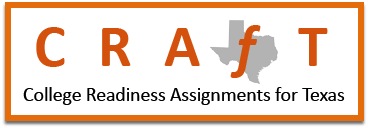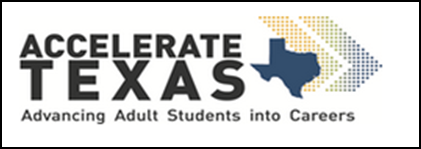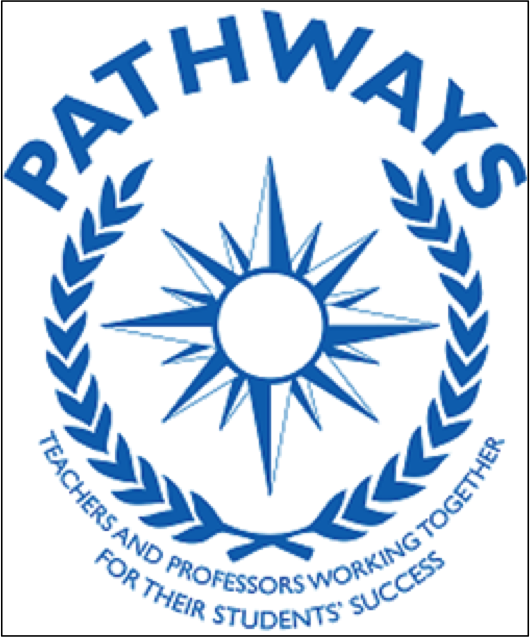HB5 College Preparatory Courses: A Look after One Year
May 2015 | University of North Texas
BY: Mary Harris and Jean Keller
Introduction
This article looks first at the AVATAR (Academic Vertical Alignment Training and Renewal) work with College Preparatory Courses (CPC) as part of a national trend toward the offering of transitional courses at the high school level. The unique structure of the Texas CPC approach to transitional courses contributes promising practices for increasing the numbers of high school students graduating “college ready,” without the need for developmental education, expensive both to individual students and to taxpayers. Second, the article shares some of the unresolved issues arising from our CPC alignment work one year into this state-wide experiment.
In 2014-15, funds granted to AVATAR were dedicated to alignment of College Preparatory Courses as defined by House Bill 5. The structure of grants of the Texas Higher Education Coordinating Board (THECB) to AVATAR enabled the awarding of small grants to one partnership in each of the 20 Education Service Center (ESC) regions of the Texas Education Agency (TEA). AVATAR defines a “partnership” as including at least one school district, one 2-year institution of higher education (IHE), one 4-year IHE, and one P-16 Council or other business partner. A partnership engages “vertical alignment teams” (VATs) in development and evaluation of curriculum, in this case the mathematics and English language arts transitional courses mandated by HB5 for offering by each school district in consultation with partnering colleges for students who might require assistance in becoming college ready.
Texas CPCs from a National Perspective
Among the states, Texas is unique in its work over the last decade to develop College and Career Readiness Standards (CCRS) as part of a coordinated P-16 effort, Closing the Gaps by 2015. A study of college readiness partnerships by the National Center for Postsecondary Research (Barrett, Corrin, Nakamishi, Bork, Mitchell, & Sepanik, 2012) found that such programs were fairly uncommon in Texas, and 72% of the 133 that met their criteria were federally funded, including Talent Search, Upward Bound, and GEAR UP. State developed programs, 12%, included GO Centers, College Connection, and other higher education intensive and bridge programs. At the same time, the Texas High School Project, with seed money from the Bill and Melinda Gates Foundation, was jumpstarting development of new models for high schools, including early college high schools and STEM academies. By 2015, 58 early college high schools and 70 T-STEM academies had been approved by the state (Educate Texas, 2015). Meanwhile, in 2008, the Bill and Melinda Gates Foundation initiated with the Southern Regional Education Board (SREB) a study of strategies to improve college readiness, among them transitional courses in the senior year of high school (Barnett, Fay, Trimble, and Pheatt, 2013)
In 2013, researchers at the Community College Research Center (Barnett et al., 2013) found 29 states in which transitional courses were being offered, all as fairly new initiatives. They studied these courses in four states, NY, TN, CA, and WV, and their analysis provides some basis for comparison with the CPC work in Texas. Some ways that the Texas CPC initiative is similar to work in other states include its focus on ELA and mathematics, dependence on results of state assessments to define a student’s college readiness (although this is a local option in Texas), and the possibility that the transitional course may meet a high school graduation requirement for the student. Also, in general, transitional course initiatives in Texas are led at the local level with school districts taking the lead in implementation within a partnership framework. Some of the ways the Texas effort is unique are its relationship to state standards (CCRS) and assessments, student choice about enrollment in the transitional courses, and the extent of local control over course development and implementation. In all states, the transitional course initiative has generated discussion about fundamental issues such as what college readiness is and whether high school graduation should be synonymous with college readiness (Barnett et al., 2013). However, it may be that Texas’ extensive state-level involvement in the accountability movement helps to move more quickly than in some other states from discussion to action in the local implementation of transitional courses.
As reported in the TXCCRN Digest, March-April, 2015, AVATAR surveys of CPC implementation have shown ESC Regions 1, 2, 16, 17, 19, and 20 farthest along in implementation of and student enrollment in CPCs. Please note that AVATAR survey data are limited to project school districts; they do not necessarily represent all CPC activity in a given region. The work of leading partnerships suggests some of the issues others will face as they deepen implementation of the CPCs mandated by HB5.
Unresolved Issues
HB5 frames the offering and recognition of the results of CPCs for college readiness and admission as a matter of local agreements. However, Regions 1 (South Texas), managed by the University of Texas Pan American, and 19 (El Paso) have organized collaboratives that include all ISDs and IHEs in these regions, and Region 1 is beginning to work for reciprocity with neighboring Regions 2 (Corpus Christi) and 20 (San Antonio) for students who have successfully completed local CPCs. As CPCs become established, it seems that ISDs will want to ensure admission agreements for students at colleges they are likely to want to attend even if not in the same region.
In regions like 1 and 19, where the same courses have been endorsed by multiple school districts and IHE’s, horizontal alignment of the curriculum becomes an issue. Receiving colleges want to ensure that all CPC completing students took courses of equal rigor and content from qualified teachers. This concern is generating IHE calls for mandatory professional development for teachers that includes calibration exercises in which all the instructors associated with one course ensure their grading criteria are fairly and commonly applied. This kind of opportunity for professional development through work on a common course is attractive to many experienced teachers and may offer an incentive for recruitment of students by teachers in regions where the CPCs have been undersubscribed to date.
In CPC development, IHEs have varied in the extent to which they are receptive to the opportunity provided by HB5 for students to be exempt from the Texas Success Initiative (TSI) by passing the CPC at a pre-specified level. Some want passing the TSI to be part of the specification. Others accept the demonstration of knowledge through the course as a substitute. HB5 specifies that the exemption provided by the course may be current for one year after completion. This supports the original expectation that the course would be taken only by seniors. Some districts are wanting juniors to enroll in CPCs, however, and some families are wanting the enrollment exemption to extend for more than one year. The Texas Legislative Assembly is considering these issues as illustrated in the proposed Senate Bill 1767.
The other side of the issue of the extent of an exemption is what to do when a student enrolled in a CPC independently passes the TSI. Must the student who has now demonstrated that he or she is college ready remain in the two-semester CPC for a second semester? If the course is required for graduation, it seems the student should complete the course. However, ISDs vary in the decisions they have made about whether or how these courses apply to graduation and for whom.
Another issue in some partnerships has arisen from the original Memoranda of Agreement making no provision for sharing of data between the ISD offering the CPC and its partnering IHE(s). Provisions are needed for partners to share data such as how many students took the course and how many passed. This is important for evaluating the effectiveness of the courses; evaluation of the CPCs by the partnership is one of the provisions of HB5. IHEs are also wanting the names of students enrolled in the CPCs for recruitment as part of data-sharing agreements.
Conclusion
Overall, first year implementation of CPCs in Texas has varied by region. Because development of these courses requires partnership, characteristics noted by Barnett et al. (2012) as applying to other college readiness partnerships apply here as well. Successful partnerships are intense, require institutional commitment, typically involve a champion, and provide dedicated resources. Potential benefits include greater success for students, opportunity for recruitment by colleges, alignment of academic standards, sharing of best practices, cross-system faculty development, and opportunity for additional beneficial collaborations. Challenges include lack of funding, differences in institutional cultures and norms, and complications arising from lack of clear feeder patterns that make implementation more difficult in more populated environments. Nevertheless, the CPC initiative in Texas offers a specific and important group of high school students a just-in-time resource for college readiness and success.
References
Barnett, M. A., Corrin, W., Nakarishi, A., Bork, R. H., Mitchell, C., & Sepanik, S. (2012). Preparing High School Students for College: An Exploratory Study of College Readiness Partnership Programs in Texas. National Center for Postsecondary Research. Available at http://bit.ly/1GtStA4
Barnett, E. A., Fay, M. P., Trimble, M. J., & Pheatt, L. (2013). Reshaping the College Transition: Early College Readiness Assessments and Transition Curricula in Four States. Teachers College, Columbia University, NY: Community College Research Center. Available at http://bit.ly/1KoYsIH
Harris, M., & Keller, J. (2015). Results of AVATAR Regional College Preparatory Course Survey. Texas College and Career Readiness Network Digest, 13, March-April. Available at http://bit.ly/1KoYuQS


 Show Printable Version
Show Printable Version




